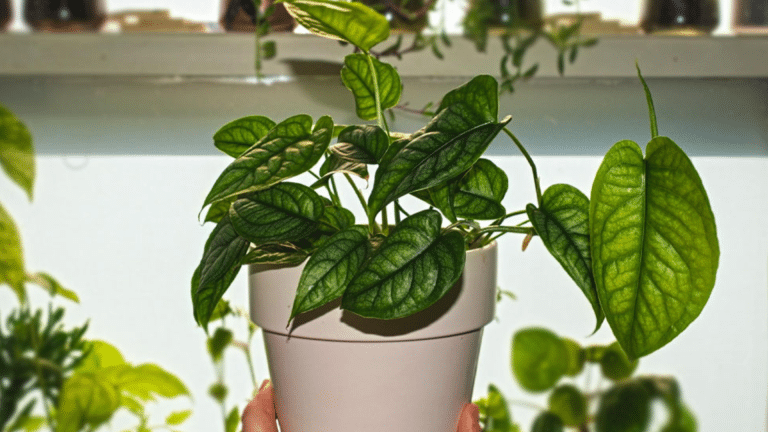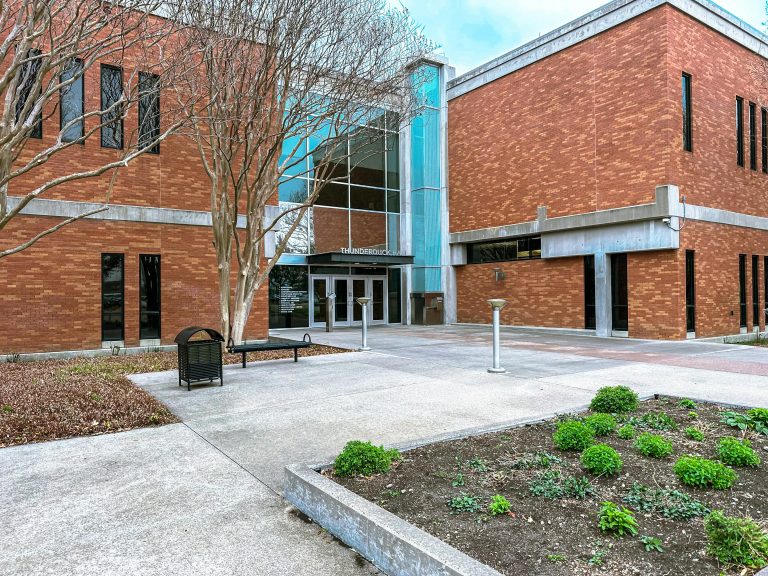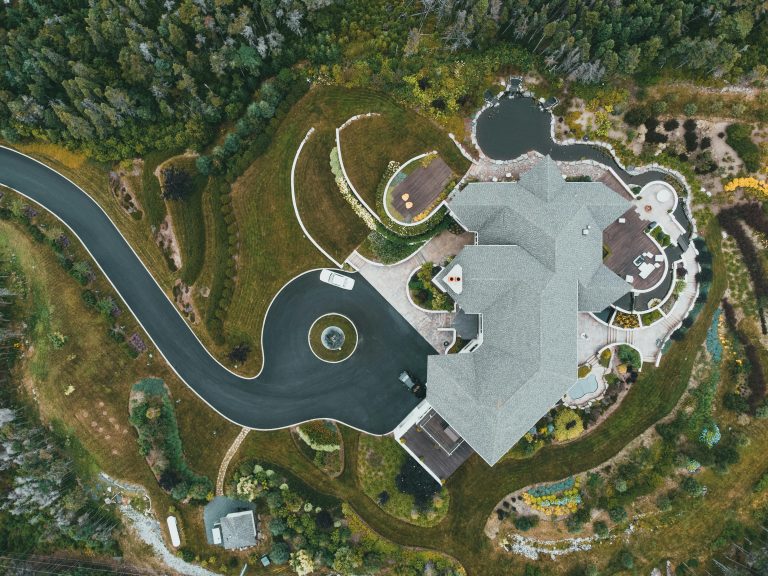Are you waiting for your Monstera Siltepecana to get those cool holes in its leaves? You’re not alone. These holes, called fenestrations, show up when your plant is happy and growing well.
This guide covers everything you need to know about helping your plant reach its full potential. You’ll learn what to expect at each growth stage, which tools make care easier, and how to fix common problems. We’ll also answer top questions about trimming, care difficulty, and growth speed.
By the end, you’ll have all the tips you need to help your Monstera Siltepecana grow from a small plant into a stunning mature specimen with beautiful leaf holes.
Understanding Monstera siltepecana Fenestration
Fenestration simply means the holes or splits that appear in the leaves of certain plants. For Monstera siltepecana (also called Silver Monstera), these openings start to show up as the plant ages and receives proper care.
The holes begin small, often at the edges of leaves. As the plant keeps growing, these openings become more clear and can cover larger areas of each leaf.
Young Monstera siltepecana plants have solid leaves without holes. The appearance of these openings is a sign your plant is growing up!
Why Do Monstera Plants Develop Fenestrations?
Monstera plants grow these holes for practical reasons:
- Wind protection – holes let air pass through leaves without causing damage
- Better light use – openings allow sunlight to reach lower leaves
- Rain access – water can flow through to roots below
These holes aren’t random but serve real purposes that help the plant do well in its natural home. What looks like a pretty design choice is actually a smart growth strategy.
When to Expect Fenestrations
Young Monstera siltepecana plants won’t show any holes in their leaves. You’ll need some patience!
Most plants start to show their first holes after growing for at least 9-12 months, reaching a more mature size or after having multiple healthy leaves.
The timing can change based on your care routine. Plants with the right light, water, and support often show holes sooner than those with less than ideal care.
For faster results:
- Provide bright, indirect light
- Use a climbing support like a moss pole
- Keep humidity above 60%
- Water when the top inch of soil feels dry
Remember that each plant grows at its own pace. Some might show holes earlier, while others take longer even with perfect care.
How to Encourage Monstera siltepecana Fenestrations
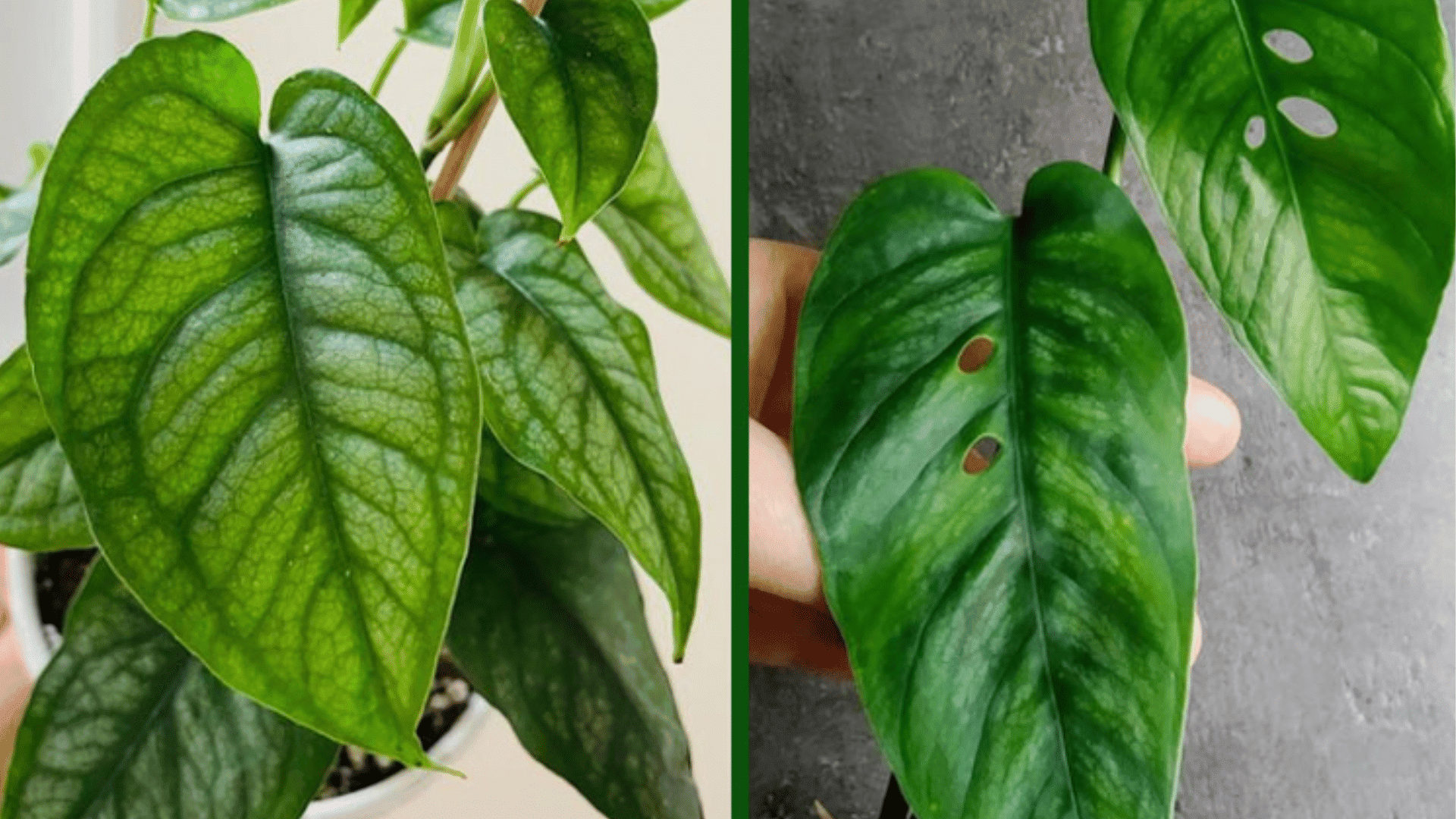
Now that you understand what leaf holes are, here’s how to help your Monstera siltepecana grow them. Good care makes a big difference in how fast your plant matures.
1. Light Requirements
Your Monstera needs bright, indirect light to grow holes in its leaves. Put it near an east-facing window for best results.
Morning sun is fine, but shield it from hot afternoon rays that can burn the leaves. If your plant gets too little light, it will grow slowly and may never form holes.
2. Watering and Humidity Tips
Water your plant when the top inch of soil feels dry. Make sure the pot has drainage holes so extra water can flow out. Don’t let your plant sit in water, as this can cause root rot.
These plants come from humid areas. They grow best when humidity is above 60%. You can use a small humidifier or put a tray with water and pebbles under the pot. Higher humidity helps leaves grow bigger, which often means more holes.
3. Soil and Fertilization
Use soil that drains well. A mix of potting soil, orchid bark, and perlite works great. This keeps the roots healthy and not too wet.
Feed your plant during spring and summer with a half-strength plant food every 4-6 weeks. Don’t feed it in fall and winter when it’s not growing much.
4. Seasonal Care Adjustments
Change how you care for your plant with the seasons. In warm months, it needs more water and food. In cold months, cut back on both.
New growth in spring often shows more holes than older leaves. If your plant grows slowly in winter, that’s normal – just be patient.
Growth Journey of Monstera siltepecana
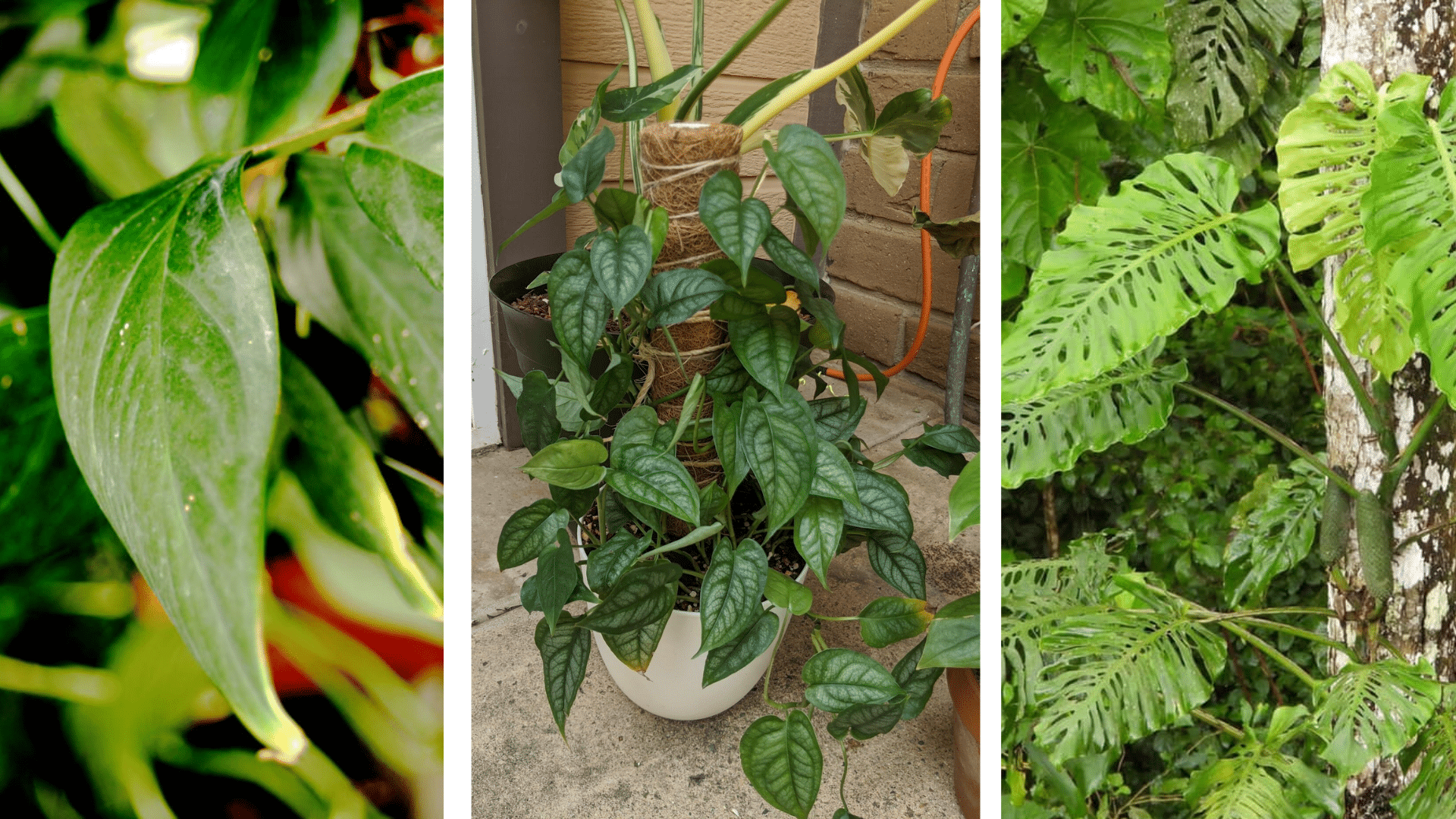
Monstera Siltepecana changes a lot as it grows from a small plant to a mature one. This guide shows you what to expect at each growth stage.
The most exciting part is when your plant starts to form holes (fenestrations) in its leaves, which happens when it’s getting the right care and reaching maturity.
| Feature | Juvenile Stage | Semi-Mature Stage | Mature Stage |
|---|---|---|---|
| Leaf size | Small, 2-4 inches | Medium, 4-6 inches | Large, 6-10+ inches |
| Leaf shape | Heart-shaped | Heart-shaped with indentations | Oval with splits and holes |
| Color | Silver-blue on upper surface | Deeper green developing | Rich, dark green |
| Texture | Thin, paper-like | Slightly thicker | Firm and leathery |
| Special marks | No holes or splits | Small notches at edges | Clear holes (fenestrations) |
| Growth habit | Small trailing stems | More active climbing | Strong climbing with aerial roots |
| Time frame | First 6 months | 6-18 months | 18+ months |
Visual Growth Timeline
Taking photos of your plant every few months creates a visual record of its growth. This helps you see how your care choices affect its development. Good times to take photos include:
- When you first bring your plant home
- At 6 months of growth
- At 12 months of growth
- When you spot the first signs of fenestration
Note: Time to fenestration varies based on growing conditions. Some plants may take up to 2 years to show holes, while others may develop them sooner with ideal care.
Taking photos of your plant every few months creates a visual record of its growth. This helps you see how your care choices affect its growth rate and overall health.
Helpful Tools and Accessories
The right tools and setup make a big difference in how well your Monstera Siltepecana grows. Here are some useful items that can help your plant thrive and develop those sought-after leaf holes.
Best Pots and Soil Mixes
Good drainage is key for Monstera Siltepecana. Choose the right pot and soil to keep your plant happy:
Pot Types:
- Terracotta pots – allow soil to dry out between watings
- Plastic pots with drainage holes – hold moisture longer
- Hanging planters – good for trailing growth pattern
- Size: Choose a pot 1-2 inches larger than the root ball
Soil Mix Options:
- Aroid mix (bark, perlite, soil) – provides air to roots
- 2 parts indoor potting mix + 1 part perlite + 1 part orchid bark
- Cactus soil + peat moss (equal parts) – good drainage but holds some moisture
A good mix should feel light and fluffy, not heavy or soggy. If you stick your finger in and it comes out with mud stuck to it, your mix is too dense.
Recommended Trellises
To encourage fenestration, your Monstera needs support to climb. Some good options include:
- Moss poles – mimic trees in nature, allow aerial roots to attach
- Bamboo stakes – simple, affordable solution for young plants
- Coconut coir poles – hold moisture for aerial roots
- DIY trellis – make from garden stakes and garden twine
- Wall trellis – wood or metal grid attached to the wall (keep plant in front)
The taller your plant grows with support, the more likely it will develop mature leaves with holes.
Growth Accessories
| Category | Tools | Purpose |
|---|---|---|
| Humidity | Small humidifier | Increases air moisture around plant |
| Pebble tray with water | Creates humid microclimate (pot sits on pebbles) | |
| Plant grouping | Plants together create shared humidity | |
| Bathroom or kitchen placement | Takes advantage of naturally humid rooms | |
| Light | Sheer curtains | Filters bright direct sunlight |
| Plant lights | Provides light in dark corners | |
| Light meter app | Helps check if light levels are adequate | |
| Care Tools | Moisture meter | Shows when soil needs water |
| Watering can with narrow spout. | Allows precise watering at soil level | |
| Spray bottle | Helps clean dust from leaves | |
| Clean scissors | Makes clean cuts when pruning |
Remember that Monstera Siltepecana comes from tropical areas with high humidity, warm temperatures, and filtered light. Your tools should help create these conditions in your home.
Conclusion
Growing a Monstera Siltepecana to the stage where it shows leaf holes takes time and proper care. As it matures, the plant changes from small, silver-blue leaves to larger green ones with fenestrations.
Good light, the right soil mix, climbing support, and proper humidity all help speed up this process. Remember that each plant grows at its own pace – some may take up to 2 years to show their first holes.
Share photos of your plant’s growth in the comments below. How is your Monstera Siltepecana doing?
Frequently Asked Questions
How to trim Monstera siltepecana?
Use clean, sharp scissors to cut stems just above a leaf node. Remove yellow leaves completely. Trim in spring or summer when the plant is actively growing.
Is it easy to care for?
Yes, Monstera Siltepecana is fairly simple to care for. It adapts to most homes, tolerates some neglect, and clearly shows when it needs water by drooping slightly.
How fast does it grow?
With good light and care, it grows moderately fast. Most plants put out a new leaf every 3-4 weeks during the growing season, slower in winter.
Can I speed up Monstera siltepecana growth?
Provide bright, indirect light, warm temps (65-85°F), high humidity (60%+), and a climbing support. Feed monthly with half-strength plant food during spring and summer.


